DCS is the best combat flight simulator you can play today, with a wide range of meticulously modeled aircraft and stunning maps to play on. Playing DCS in virtual reality feels incredibly immersive, but your choice of VR headset significantly impacts the quality of your experience. This article will help you pick the best VR headset for DCS for your particular setup.
I’ve been playing DCS in VR since 2018, and on PC for years before this, racking up hundreds of hours of experience. I fly a range of aircraft, but have a particular love for helicopters, in particular, the UH-1H Huey. I’ve had the pleasure of using a wide variety of VR headsets to play DCS, and it’s encouraging to see the technology get better and better every year.
DCS requires a high-resolution VR headset to be able to clearly see your cockpit instruments and MFDs, as well as to identify features and targets in the sky and on the ground. It’s also incredibly helpful to have a headset with a reasonable FOV to give you better situational awareness and make it easier to see around you and track targets. In addition, there are loads of secondary features that make a big difference to your DCS VR experience.
These are my current recommendations for the best VR headset for DCS
- Best For Most People: HP Reverb G2
- Most Versatile: Meta Quest 2
- Best Visual Clarity: Varjo Aero
HP Reverb G2
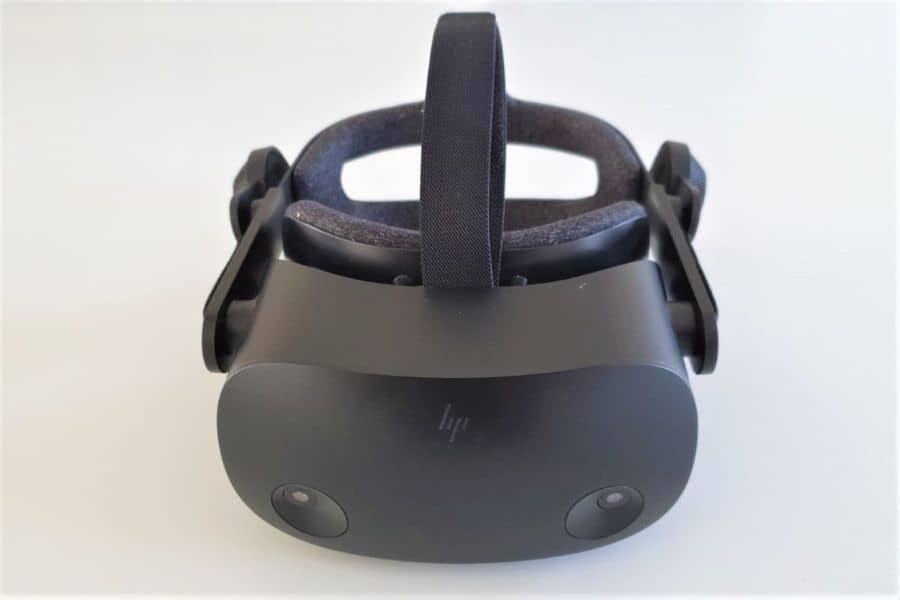
The HP Reverb G2 is my favorite VR headset for DCS due to its terrific visual clarity, excellent comfort, and great audio. There still isn’t any VR headset on the market that provides better visual clarity than the HP Reverb G2 at this price point, allowing me to see everything in DCS World clearly, including all of the instruments in my cockpit.
Whilst it doesn’t have a particularly large FOV, the visual clarity more than makes up for this, and coupled with the best-in-class audio, comfortable fit, inside-out tracking, and easy setup makes the HP Reverb G2 a very easy headset to recommend.
I’ve been using the HP Reverb G2 for DCS since it was launched, and also use it for most other simulation games. The only headsets that provide better visual clarity and improved FOV require external headset tracking, which has little advantage for DCS players and comes at a significant additional cost.
When the HP Reverb G2 was first released, it was a big step up in visual clarity, and I could finally read cockpit instruments without having to lean forward. It doesn’t offer anywhere close to perfect clarity, but there is no screen door effect, text and numbers are legible in the cockpit, and objects in the distance are much easier to see.
It’s a Windows Mixed Reality headset, but is fully compatible with SteamVR and works fairly flawlessly. It has since had a minor hardware and software upgrade in the form of the HP Reverb G2 Omnicept Edition, which gets rid of some minor issues that were present with the original.
The horizontal FOV of the original HP Reverb G2 was approximately 90°, but the Omnicept Edition improves this to about 98° thanks to reduced eye relief on the facial interface. This is pretty average, and you do lose a significant proportion of your peripheral vision, but it is a reasonable trade-off for the visual clarity that you get.
The HP Reverb G2 has over-ear speakers that are the same as those used on the Valve Index, and they provide an excellent audio experience. It’s very light and exceptionally comfortable to wear, and the head strap pivots up and down allowing you to easily take the headset on and off without having to adjust the fit. The facial interface is comfortable and fits well, which prevents any light leak, creating a highly immersive environment.
If you’ve got a powerful PC capable of running DCS World in VR, the HP Reverb G2 will provide a fantastic experience, with clear visuals, excellent audio, and an overall package that can’t be matched anywhere close to the price.
HP Reverb G2 Specs
- Resolution (Per Eye): 2160 x 2160
- Refresh Rate: 90 Hz
- Lenses: Fresnel-Aspherical
- FOV (Horizontal/Vertical): 98°/90° (independently tested)
- Pixels Per (Horizontal) Degree (PPD): 23.6
- Tracking: Inside-Out Tracking
Pros And Cons Of HP Reverb G2 For DCS
| Pros Of Reverb G2 For DCS | Cons Of Reverb G2 For DCS |
| Fantastic value for the money | Relatively small FOV |
| Terrific visual clarity | No longer offers the best visual clarity |
| Excellent audio | No passthrough |
| Inside-out tracking | Relatively small sweet spot |
| Widely praised by the VR sim community | Lenses fog up easily |
Meta Quest 2
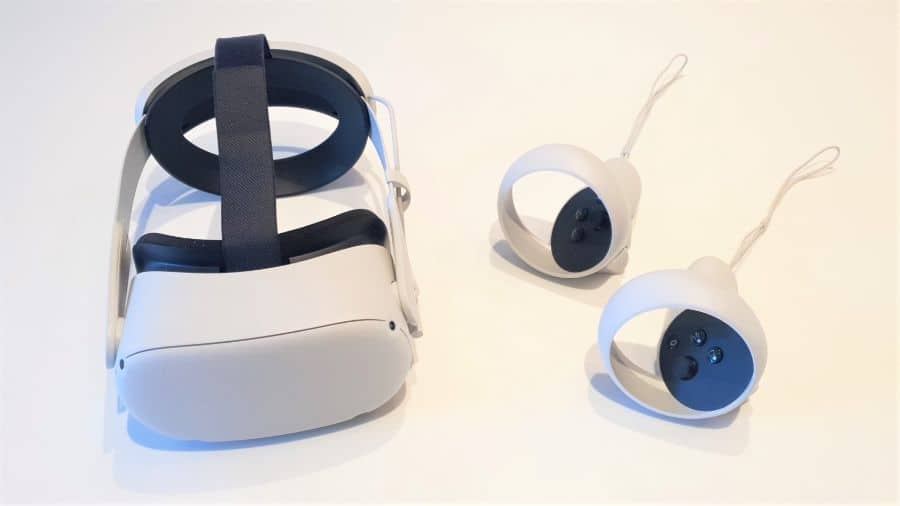
I’ve owned a Meta Quest 2 since shortly after it launched, and it’s the headset I use more than any other, primarily due to its ease of use, and versatility, but also the fact that it offers wireless PC VR. It’s not the most comfortable, and other headsets offer better visual clarity, but the feeling of being completely untethered from your computer, using Air Link or Virtual Desktop is amazing, and it never loses its appeal.
The Meta Quest 2 does a solid job in all aspects but doesn’t excel in any area. It is the perfect headset for DCS if you are planning to play a wide range of VR games, but plan on spending some of your time playing DCS.
I actually use my Quest 2 to play simulation games quite often, typically when I just want to jump in and play for a short session. The process of putting my headset on, connecting to Air Link, and loading DCS is so convenient, that it feels easier than using my HP Reverb G2. See my article comparing the Quest 2 and HP Reverb G2 for more details.
The two big downsides of the Quest 2 are comfort and battery life. The default strap of the Quest 2 is not great, so the Elite Strap is a semi-mandatory upgrade, but even with this, it isn’t as comfortable as using any of the other headsets on this list. When using the Elite Strap, it’s not uncomfortable, but the experience could be a lot better.
The other issue is battery life. With the headset alone, you’ll only get about 2 hours of battery life, which is nowhere near enough for a long DCS session. I use the Elite Strap with Battery, which roughly doubles the battery life, but even this is not always enough, particularly if the battery isn’t fully charged when you start.
One other issue with Quest 2, which I see as a good thing, but many will see as a negative is that the facial interface has quite a lot of light leak in the lower half of your visual field. Whilst this does break immersion to a degree, it means I can see my HOTAS or keyboard if I look down, allowing me to press buttons that might otherwise require me to lift the VR headset up to find. Bear in mind that you can buy a third-party facial interface that will prevent any light leak.
The other nice feature is the passthrough mode, which can be activated by double tapping the side of the headset. Whilst this is low resolution, it allows me to quickly find a controller, physical button, or another object, that I would otherwise be feeling around for blindly while playing.
The Meta Quest 2 comes in at a comparable price to the HP Reverb G2, so your choice should largely depend on what you are going to spend most of your time doing. If you plan on mainly playing simulation games such as DCS or Microsoft Flight Simulator, the Reverb G2 is a much better mainstream option. However, if you want to play DCS in addition to other popular VR games such as Beat Saber, RPGs, such as Skyrim VR, sports games such as Golf+, and social VR games, such as VRChat, then Quest 2 is a much better all-around headset.
Meta Quest 2 Specs
Resolution (Per Eye): 1832 x 1920
Refresh Rate: 72 Hz, 90 Hz, 120 Hz variable
Lenses: Fresnel
FOV (Horizontal/Vertical): 98°/93° (independently tested)
Pixels Per (Horizontal) Degree (PPD): 18.9
Tracking: Inside-out tracking
Pros And Cons Of Meta Quest 2 For DCS
| Pros Of Quest 2 For DCS | Cons Of Quest 2 For DCS |
| Incredibly versatile | Constrained by battery life |
| Wireless PC VR is a huge plus | Doesn’t excel in any area |
| Visual clarity is perfectly adequate | Sound is mediocre |
| Good value | You need the Elite strap for comfort |
| Passthrough is very useful | God rays are quite noticeable |
Varjo Aero
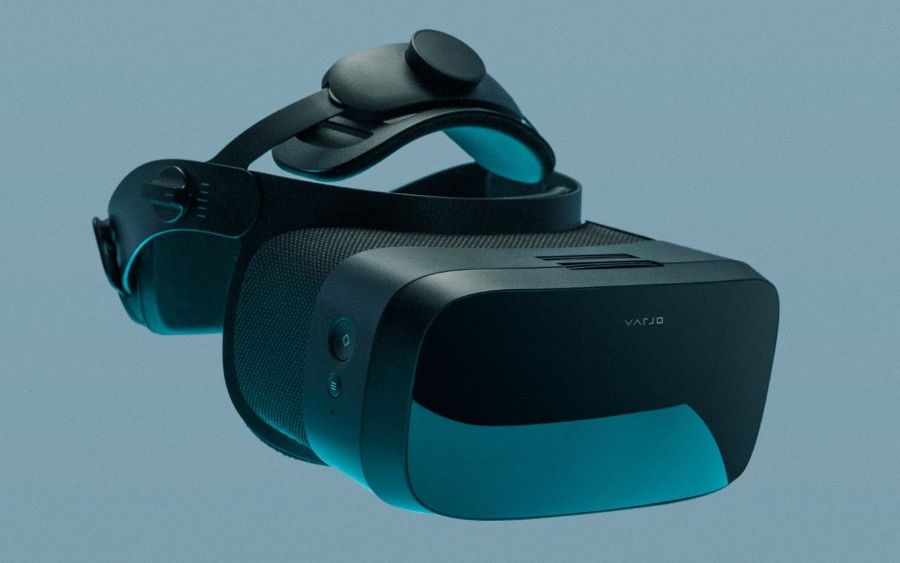
Although I don’t own a Varjo Aero, I have had the pleasure of trying it on a number of occasions, and all I can say is that it is incredible. The visual clarity is breathtaking, it’s exceptionally comfortable, has a reasonable FOV, automatic IPD adjustment, and eye-tracking.
I still can’t get over how clear everything was when I tried the Varjo Aero, which was as much of a jump in visual clarity as moving from the Rift S to the Reverb G2. The increase in visual clarity doesn’t just make things clear, and text readable, but it significantly increases immersion, as it feels much more like you are actually sitting in the cockpit of a plane, with fewer visual reminders that you are playing a VR simulator.
One big downside of the Varjo Aero is the price, which is quite frankly astronomical. This is a headset that is really only intended for early adopters, prosumers, and businesses, and most people shouldn’t even consider it.
Varjo Aero also comes without built-in audio, which I have mixed feelings about. On the one hand, it is disappointing to have to add your own headphones, particularly when other headsets do such a good job with audio solutions, but on the other hand, it gives you the flexibility to use whatever headphones you like.
The Varjo Aero also requires the use of external lighthouse tracking stations, which I am not a fan of for VR simulators. Due to the seated nature of DCS, external tracking really adds little to the experience but comes at a significant additional cost. However, if you plan on using the Varjo Aero for other purposes, then external tracking is the gold standard, and whilst fiddly to setup, provides extremely accurate tracking.
With the HP Reverb G2 being a fraction of the cost, and offering an excellent, albeit lesser, experience, it’s hard to recommend the Varjo Aero, except for those where money is no object or those who insist on having the absolute best.
Varjo Aero Specs
Resolution (Per Eye): 2880 x 2720
Refresh Rate: 90Hz
Lenses: Aspheric
FOV (Horizontal/Vertical): 102°/73° (independently tested)
Pixels Per (Horizontal) Degree (PPD): 35 (Max)
Tracking: External SteamVR Tracking
Pros And Cons Of Varjo Aero For DCS
| Pros Of Varjo Aero For DCS | Cons Of Varjo Aero For DCS |
| Amazing visual clarity | Relatively small FOV |
| Very comfortable | Prohibitively expensive |
| The sweet spot is huge | No built-in speakers |
| Eye tracking | Requires external base stations for tracking |
| Automatic IPD adjustment | Bulky headset |
HTC Vive Pro 2
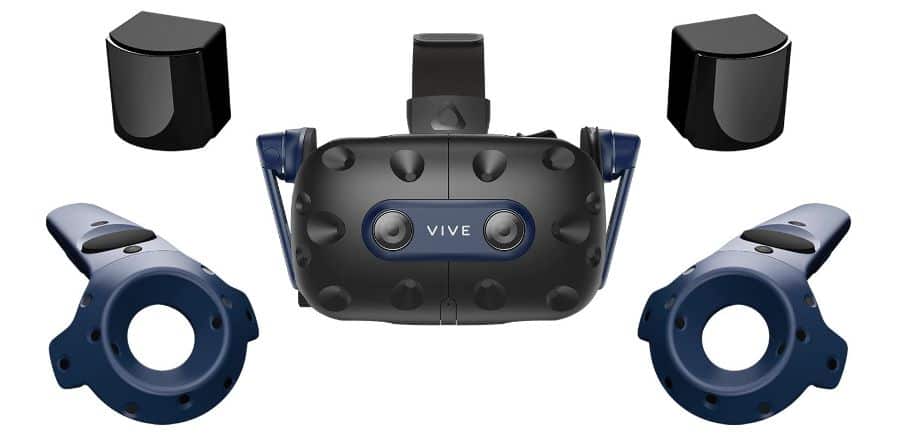
The HTC Vive Pro 2 is a great option for those who want both excellent visual clarity and an improved FOV, without having to spend the significant amount required to get a Varjo Aero. The HTC Vive Pro 2 provides slightly better visual clarity than the HP Reverb G2 thanks to the higher-resolution panels, which provide 2448×2448 pixels per eye.
It also has a much larger FOV than the HP Reverb G2, at approximately 114° horizontally, although only 90° vertically. This actually takes some getting used to, and some people have been underwhelmed by the FOV of the Vive Pro 2 due to the relatively unimpressive vertical FOV. However, this can be mitigated by using an aftermarket facial interface to reduce eye relief and largely eliminates this issue.
At less than half the price of the Varjo Aero, the Vive Pro 2 is a great headset, offering a larger FOV but slightly worse visual clarity. Once again, it has external tracking, via Lighthouse 2.0 stations, which can be purchased as part of a kit, or you can buy the headset separately.
The HTC Vive Pro 2 is an excellent headset for DCS, but it’s pricey and isn’t a huge leap forward compared to the HP Reverb G2. It does fill a gap in the market and will appeal to enthusiasts who prefer an external tracking solution. For anyone who already has external tracking stations from a previous VR headset, the HTC Vive Pro 2 will be a particularly compelling option.
HTC Vive Pro 2 Specs
Resolution (Per Eye): 2448×2448
Refresh Rate: 120Hz
Lenses: Fresnel lenses
FOV (Horizontal/Vertical): 116°/96° (independently tested)
Pixels Per (Horizontal) Degree (PPD): 24.9
Tracking: External SteamVR Tracking
Pros And Cons Of HTC Vive Pro 2 For DCS
| Pros Of Vive Pro 2 For DCS | Cons Of Vive Pro 2 For DCS |
| Market-leading visual clarity | Expensive compared to HP Reverb G2 |
| Cost-effective externally tracked headset | Comes with outdated HTC Vive controllers |
| Large FOV | Requires external SteamVR tracking stations |
| Excellent audio | Atypical shape of FOV |
| High refresh rate | Can get quite hot when in use |
Valve Index
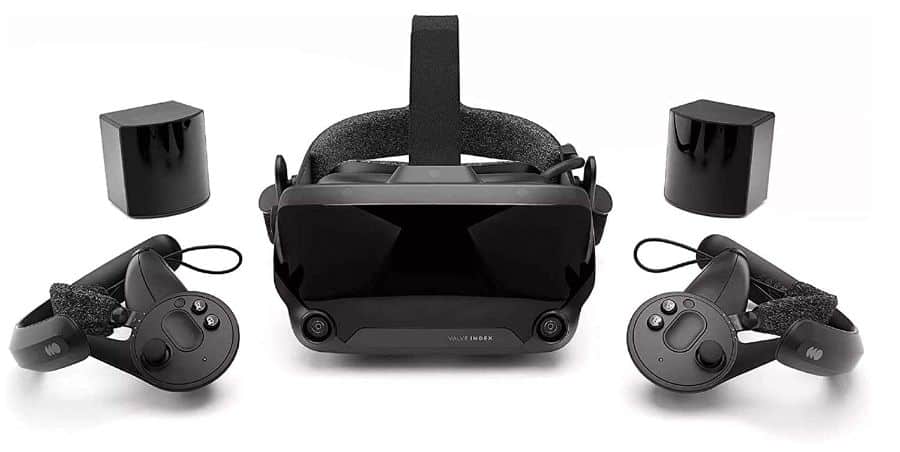
The Valve Index was initially released in June 2019, but still stands up well to the competition today. It still provides a very commendable level of visual clarity and an FOV that most other headsets can’t compete with. It has a resolution of 1440×1600 per eye, which is below the HP Reverb G2 and well below the HTC Vive Pro 2, but it is still very reasonable for most activities, and the large FOV partially compensates for this.
The Valve Index is also one of the most cost-effective ways to get started with an externally tracked VR headset. If you already have a Valve Index, I’m not sure that I would be rushing to upgrade to one of the other options on this list, but equally, I struggle to recommend it over some of the alternatives. The HP Reverb G2 offers much better visual clarity for half the price, and the HTC Vive Pro 2 is better in most ways for only a bit more money.
Valve Index Specs
Resolution: 1440×1600
Refresh Rate: Up to 144Hz
Lenses: Fresnel Lenses
FOV (Horizontal/Vertical): 108°/104° (independently tested)
Pixels Per (Horizontal) Degree (PPD): 14.8
Tracking: External SteamVR Tracking
Pros And Cons Of Valve Index For DCS
| Pros Of Valve Index For DCS | Cons Of Valve Index For DCS |
| Above average FOV | Older than competitors |
| Terrific refresh rate | Hard to read cockpit instruments |
| Very comfortable | Requires external tracking |
| Market-leading audio | Less suited for DCS than others |
| Good value externally-tracked headset | Lower resolution than others |
Pimax 8KX
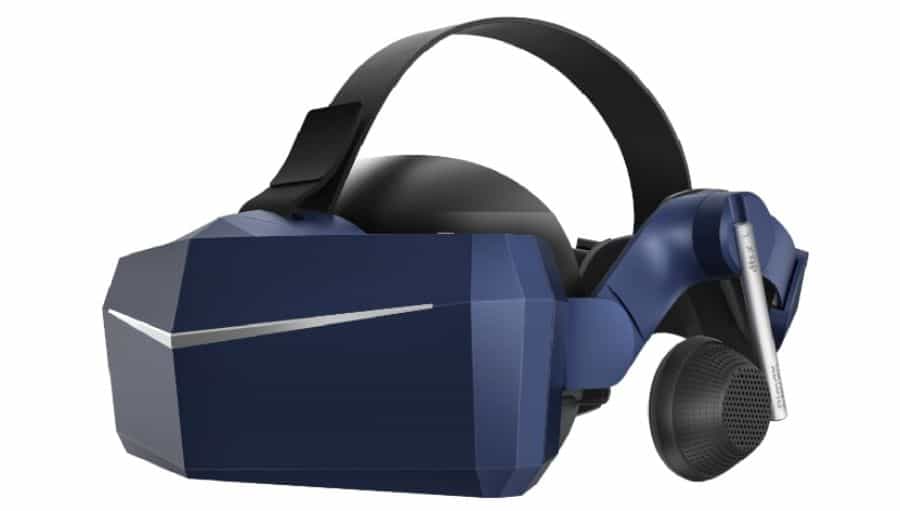
If FOV is really important to you, then you will no doubt have read about Pimax VR headsets, which offer up to 170° horizontal FOV. On paper, the Pimax 8KX looks incredible, with a resolution of 3840×2160 per eye, and it really is an impressive headset, but it’s not quite as good as the raw specs would suggest.
The combination of the huge FOV and great visual clarity makes the Pimax 8KX a great choice, but the visual clarity isn’t actually any better than the HP Reverb G2 because the available pixels are spread across a larger FOV. In addition, there is some distortion at the edges of your field of view that some people may find distracting.
Where the Pimax 8KX really shines for DCS players is that it provides such a wide FOV, coupled with great visual clarity, giving you a massive advantage in terms of situational awareness in dogfights, while being able to see your cockpit instruments easily, and being able to identify targets at distance much easier than some other headsets.
Once again, this is a VR headset that requires external tracking stations, which adds to the cost, without adding much benefit for the typical VR simmer. Pimax is also a company that has experienced some growing pains, with issues concerning headset build quality, and software performance. Thankfully, I think most of these issues have been largely resolved, and Pimax seems committed to the VR industry and certainly enjoys pushing the boundaries of what is possible.
Pimax 8KX Specs
Resolution: 3840×2160
Refresh Rate: 90 Hz
Lenses: Fresnel lenses
FOV (Horizontal/Vertical): 159°/103° (independently tested)
Pixels Per (Horizontal) Degree (PPD): 22.6
Tracking: External SteamVR Tracking
Pros And Cons Of Pimax 8KX For DCS
| Pros Of Pimax 8KX For DCS | Cons Of Pimax 8KX For DCS |
| Breathtaking FOV | Some visual distortion at the peripheries |
| Great speakers | Very expensive |
| Visual clarity similar to Reverb G2 | Requires very high-end computer hardware. |
| Very comfortable | Build quality is less impressive than others. |
| Combination of clarity and FOV is impressive | Requires external tracking. |
Best VR Headset For DCS – Breakdown By Feature
The best VR headset for DCS will depend on your individual priorities. For me, visual clarity is top of the list, whereas others will prioritize FOV, comfort, sound, or a range of other features more highly.
Your priorities will also depend on what types of aircraft you fly in DCS, and how you like to fly. Those who engage in intense air-to-air combat might benefit from a higher FOV to gain a situational awareness advantage. Others may value greater visual clarity, allowing you to spot features at greater distances or being able to read all of the instruments and MFDs in your cockpit without having to move your head and body to see them clearer.
Field of View
If FOV is your top priority, the Pimax 8KX is the clear winner. With 170° horizontal FOV (159° when independently tested) and visual clarity that meets that of the HP Reverb G2, it is a very impressive headset. The HTC Vive Pro 2 and Valve Index also have larger than average FOVs, although the Valve Index has a level of visual clarity that is now a little lower than similar competing headsets.
Comfort
The HTC Vive Pro 2 and Varjo Aero are the most comfortable headsets on this list and can be worn for hours without issue. The only headset that has any significant comfort issues is the Meta Quest 2, and even these can be largely resolved by using the Elite Strap with Battery.
Unless you are planning to spend more than 4 hours in DCS VR per day on a regular basis, most of the current headsets are perfectly comfortable for DCS.
Visual Clarity
If you want the absolute best in visual clarity for DCS VR today, the Varjo Aero stands out as the best of the best. However, it comes at an eye-watering cost and most people shouldn’t even consider it. The HP Reverb G2 is the best VR headset for DCS for most people when it comes to visual quality. There is no screen-door effect, all of the cockpit instruments are readable without having to lean forward, and the sweet spot is acceptable.
In terms of externally tracked VR headsets, the HTC Vive Pro 2 is a terrific option, offering slightly better visual clarity as well as a larger FOV than the HP Reverb G2, but at more than twice the price.
Price
The HP Reverb G2 offers the best value for money and is often on sale for as little as $400. This makes it cheaper than even the Quest 2 once you factor in the Elite strap, and you get a considerable amount for the money.
Special mention should also go to the Quest 2, which still offers great value, but is a headset better suited to someone who wants to have lots of different VR experiences. The HTC Vive Pro 2 also provides good value for someone who really wants external tracking and excellent visuals.
The Varjo Aero is the outlier in the price category, and it very much depends on whether you want the very best at any cost. I suspect that the next wave of VR headsets will reach similar levels of visual clarity to the Varjo Aero at a much-reduced price point, so the question is whether you are prepared to wait.
Versatility
The Meta Quest 2 is easily the most versatile of all the headsets on this list, but it still provides a good level of performance in DCS, either with the wired Link cable or wirelessly with Air Link or Virtual Desktop. Unless you’re 100% sure that you are going to spend a lot of time playing VR simulation games, Quest 2 is a really solid choice, and I very much doubt you would be disappointed.
Looking past the Quest 2, the HP Reverb G2 is a great option due to the ease of use and inside-out tracking, which avoids much of the setup and expense of externally tracked VR headsets. I’ve logged 100s of hours with the HP Reverb G2 in DCS and find the tracking to be very good, and I wouldn’t be tempted to use an externally tracked headset in preference to it, unless it had features that far exceeded it, at an acceptable price point.
